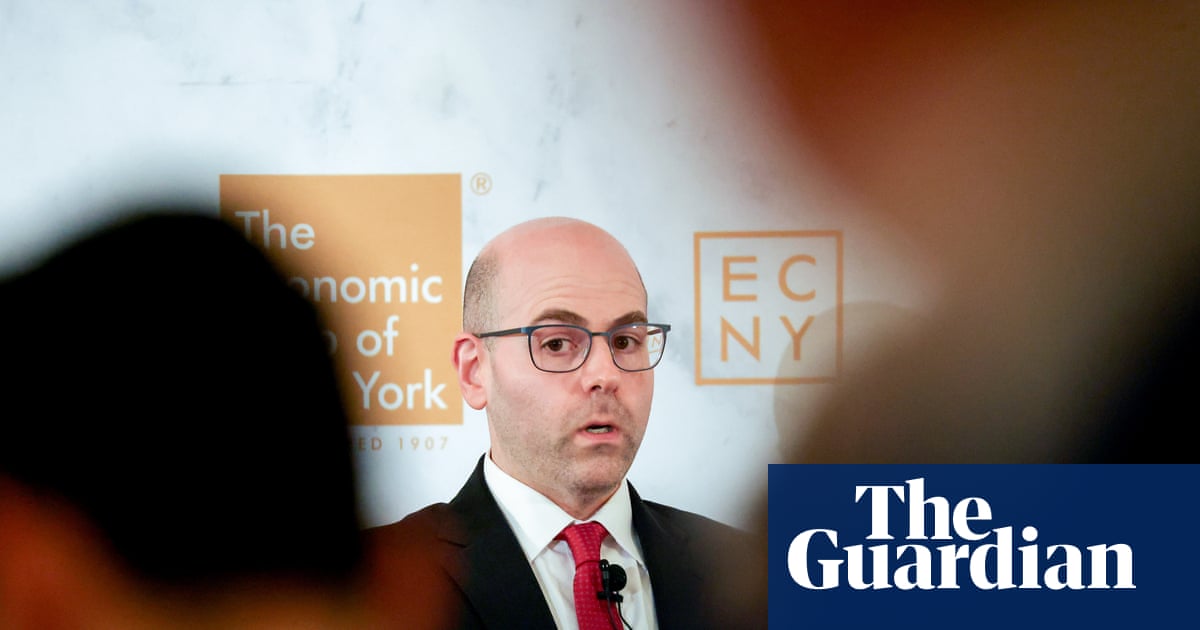Green groups stunned by the Trump administration’s rapid-fire dismantling of their environmental victories are still debating how to fight back — and torn between two contrasting strategies.
One set of activists is urging the environmental movement to join a broader anti-billionaire campaign led by Sen. Bernie Sanders (I-Vt.) and Rep. Alexandria Ocasio-Cortez (D-N.Y.), which accuses the Trump administration of attacking democracy to benefit the very wealthiest Americans.
Others want to double down on the Biden administration's portrayal of climate action as a pocketbook issue — contending that Republican attacks on investments in electric vehicles, wind farms and other clean energy technologies will wipe out jobs and burden consumers with higher costs.
Whichever path they choose, green groups big and small are grappling with political and financial threats unlike any they’ve confronted in decades — at the same time that Trump is racing to dismantle decades-old regulations, eviscerate former President Joe Biden’s climate law, champion fossil fuels and reposition the Environmental Protection Agency to focus on priorities such as artificial intelligence. They also face still-unknown potential dangers from the Trump administration’s vows to crack down on liberal-leaning nonprofits that it accuses of fomenting violence, a campaign that Democrats warn could be a pretext for a broad suppression of dissent.
The environmentalists’ divide mirrors the broader tensions within the Democratic Party over why their message failed to win over voters last year.
Unlike during Trump’s first term, when groups like the Sierra Club saw their membership and donations swell in resistance to the president, the green movement has struggled this year to generate a cohesive message. Some also face additional problems of their own: The 3.8-million-member Sierra Club, for example, fired its former executive director in August after years of internal feuding and multiple layoffs.
“A lot of climate groups weren't up for round two of doing the same thing” they did during Trump’s first term, such as focusing on large, Washington-centric demonstrations, said Jamie Henn, founder and leader of the climate activist group Fossil Free Media. “I think it's taken a while to figure out. People, admittedly, were in shock about what's happening."
“Now I think people realize we’ve got to buckle down and get ready for the long haul,” he added.
While the strategies and tactics that green leaders are pushing may differ, they are both aimed at the same outcome: reviving a durable and effective political movement to fight climate change and enforce pollution regulations at the highest levels of government.
“People feel the system's rigged across the board, and they know that their needs are not being met, and they know powerful interests are buying the outcomes of what's happening here in Washington, D.C.,” said Christy Goldfuss, executive director of the Natural Resources Defense Council. “We just have to connect the dots for people.”
Both approaches were on display in New York City this weekend ahead of the annual Climate Week activities timed to correspond with the United Nations General Assembly.
On Saturday, dozens of groups that embody the spirit of Sanders’ and Ocasio-Cortez’s “Fight the Oligarchy” tour held the “Make Billionaires Pay” march, which brought 25,000 people to Manhattan’s streets and included demonstrations in cities around the country. Participants hoisted effigies of billionaires such as Amazon founder Jeff Bezos and Tesla CEO Elon Musk and signs protesting Trump's immigration policies and slashing of environmental rules.
And on Sunday, environmental activist Bill McKibben hosted “Sun Day,” a series of gatherings across the nation and a main event in New York City to tout the economic, health and environmental benefits of solar power. The main New York City event included a meditation circle and a church appearance by McKibben and Democratic New York City Comptroller Brad Lander.
The greens' larger challenge remains daunting — somehow regaining influence over policy at a time when Trump's pro-fossil-fuel agenda faces hardly any effective opposition in Washington.
Regardless of the direction any individual group pursues, environmental leaders say the nature of the protests and organizing will look different in the coming months than during Trump’s first term.
Groups plan to eschew mass demonstrations that defined “Resistance”-era mobilizing, when green groups joined to support other interest groups for mass demonstrations like the Women’s March, which drew an estimated 470,000 people to Washington on the day after Trump’s January 2017 inauguration.
Instead, they plan to participate in smaller protests scattered throughout the country that activists believe will bring more people to the streets while showing wider disapproval of Trump and GOP policies.
The environmental movement also plans to cultivate a more significant internet counterweight to conservative social media narratives, which includes paying influencers to promote clean energy.
“The clock is ticking. We are losing time,” said Mel Smith, a spokesperson with the climate activist group 350.org, one of the lead organizers for the “Make Billionaires Pay” march. “The same playbook isn’t going to work and is not working. We are not winning.”
But environmentalists are also wary of becoming a target for retribution, with many nervous Trump would seek to debilitate organizations by restricting access to funding. One such move could include revoking environmental groups’ tax-exempt status. Activists fretted earlier this year that Trump might do exactly that — though many legal experts said any such sweeping order would be legally dubious.
Trump’s broader attacks on his opponents have already included suing and defunding universities — which conduct much of the nation’s crucial climate research — and waging legal battles on law firms known for representing liberal clients against the government.
Many environmental stalwarts are also reeling from problems of their own. Greenpeace USA is facing an existential threat after a pipeline company won a $660 million verdict against the group for its role in organizing protests against the Dakota Access Pipeline in North Dakota. Large philanthropies that had devoted hundreds of millions to efforts to fight climate change, such as Bill Gates’ Breakthrough Energy, have pulled back spending and cut their staff.
While environmental groups such as NRDC, the Environmental Defense Fund and Earthjustice have continued to challenge the Trump administration’s regulation rollbacks in the courts, the strategies to appeal to voters in states and cities and across the country are an admission that there is little chance of swaying Republicans in Washington.
“People don't have a lot of optimism that we're going to make huge changes at the federal level,” said Margie Alt, director of Climate Action Campaign, a coalition of environmental groups. “The stuff this administration has done has really chilled people.”
Environmental organizers have pushed “Make Polluters Pay” initiatives in several states, scoring successes with laws in New York and Vermont to make oil, gas and coal companies pay for damages from storms, droughts, heat waves and wildfires linked to climate change. (The Trump administration asked a judge this month to strike down the Vermont law.) Organizations such as NRDC have devoted more resources to passing similar bills in Maryland, Illinois, California and New Jersey, Goldfuss said.
McKibben has focused on those types of local organizing in recent years through Third Act, a group of senior citizens acting to prevent climate change, which has pressed local and state utility commissions for policies to speed renewable energy. Sun Day took that decentralized approach with events this month across the country — from Albuquerque to Portland, Oregon, to Middlebury, Vermont — celebrating renewable power and the sharp drops in costs that have made wind and solar two of the fastest-growing sources of electricity.
That grassroots push was used by McKibben who, along with Henn, co-founded 350.org, to grow opposition to the now-defunct Keystone XL pipeline project that former President Barack Obama killed in 2015. That in turn grew into a “Keep It In the Ground” push to stop fossil fuel development.
“The regulations I care about are about clean energy — sun and wind. We absolutely need to build as much of it as we can because we are in a deep climate crisis,” McKibben said. “We've already removed every possible regulation that might get in the way of building dirty energy.”
That emphasis on building more renewable energy and lowering costs is an “abundance-coded” approach to making climate gains, said Jesse Jenkins, an associate professor and energy expert at Princeton University, referring to a burgeoning movement to fix sclerotic government systems to build more energy, housing and other infrastructure. However, Biden's effort to promote the economic promise of clean energy notably failed to excite voters in the 2024 election, even as his administration was pouring tens of billions of dollars into planned wind farms, battery factories and electric cars — and it's unclear whether such a message will resonate now.
“I think we're conducting that experiment,” Jenkins said.
Several mainstream environmental organizations have latched onto that message at the national level.
Climate Power, an environmental communications campaign, has hammered Trump and Republicans over electricity price increases, particularly for the GOP megalaw that sped up the sunset of incentives for solar and wind power. The League of Conservation Voters in recent days expanded its organizing operations across several target districts to pressure elected officials over the law and rising electricity costs, said vice president for campaigns Sara Schreiber.
EDF Action Fund President David Kieve said he hopes candidates adopt Democratic New Jersey gubernatorial candidate Mikie Sherrill’s strategy of attacking Republicans on energy costs.
“The 2024 election was not a repudiation of ever campaigning on climate and environmental issues,” Kieve said. “It was that stuff costs too much in this country and they wanted Donald Trump to do something about it.”
But Evergreen Action Executive Director Lena Moffitt said while she has pushed other green leaders to recognize that energy affordability presents an opening, her group is focusing on state-level advocacy because of the grim prospects they have to drive policy changes in Washington. That means allying with groups protesting Trump’s efforts to expand executive powers.
“We are now recognizing and saying explicitly that we need a functional democracy to solve complex problems like climate change,” she said. “That's becoming very clearly a threshold issue for all of us who care about solving systemic problems.”
That’s the ethos behind the "Make Billionaires Pay" march, which strove to harness populist energy for a broad-based progressive agenda.
Participants said delivering the critique on income inequality and the ultra rich would build common cause with like-minded individuals at a time when climate change feels less an immediate priority compared with people being detained over their immigration status.
“The best hope here is to fight fascism with an alternative vision. And climate is one piece of that vision,” said Collin Rees, U.S. program manager with the environmental group Oil Change International. “It might never again reach the height of 2018, 2019 — I don't know that for sure — but it can be a part of what is set up in opposition to this Trump fascism and Trump agenda.”
The youth climate movement has focused at the local level to turn municipalities and states into “fortresses” against his policies, said Keanu Arpels-Josiah, an organizer for climate-focused Fridays for Future, the group that arose from Greta Thunberg’s activism.
Arpels-Josiah, who was involved in the march, said that requires working in concert across issues to build political power. His organization has thrown its support behind a proposal dubbed the “Livable Future Package” at the New York City Council, which includes provisions on energy efficiency, transgender rights, protections for undocumented people and affordable housing.
“That’s been the reorientation of youth climate and justice movement," he said. "What is the force that is attacking our future? It’s billionaires."

 German (DE)
German (DE)  English (US)
English (US)  Spanish (ES)
Spanish (ES)  French (FR)
French (FR)  Hindi (IN)
Hindi (IN)  Italian (IT)
Italian (IT)  Russian (RU)
Russian (RU) 























Comments